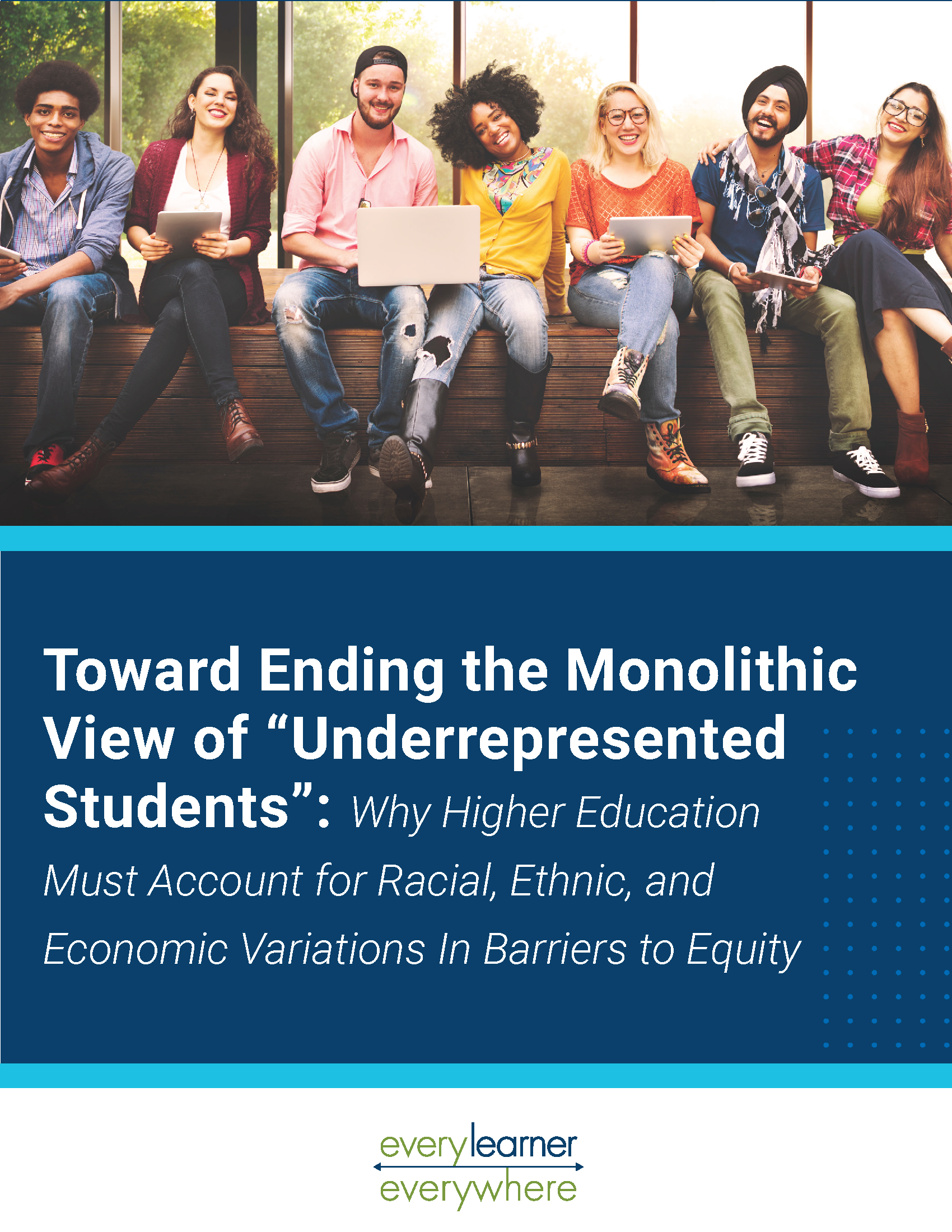Summary
Why Higher Education Must Account for Racial, Ethnic, and Economic Variations In Barriers to Equity
Higher education in the United States has a tendency to treat all “underrepresented” students as a monolith in ways that are counterproductive to the cause of equity. This aggregation of racially and ethnically minoritized, poverty-affected, and first-generation students obscures significant variations in admissions, course-level outcomes, persistence, graduation, and career success. Digital learning is particularly lacking in disaggregated data. To make progress on equity, educators and institutional leaders must be able to balance seeing and examining the patterns of lived experience among people in specific student populations with hearing how every student’s experience is unique.
Toward Ending the Monolithic View of “Underrepresented Students”: Why Higher Education Must Account for Racial, Ethnic, and Economic Variations in Barriers to Equity, synthesizes commentary, research, and programmatic activity on how higher education has grappled with disaggregating and using student data to confront and close equity gaps for particular student populations. A literature review of relevant studies and commentary was complemented by original interviews with 17 experts, including faculty, administrators, researchers, advocates, and students. Those experts are quoted at length throughout the report. The purpose of the report is to advance high-level evidence-based conversation about equity and learning — especially digital learning — in U.S. colleges and universities.
Details
- Year Published : 2022
- Month Published : September
